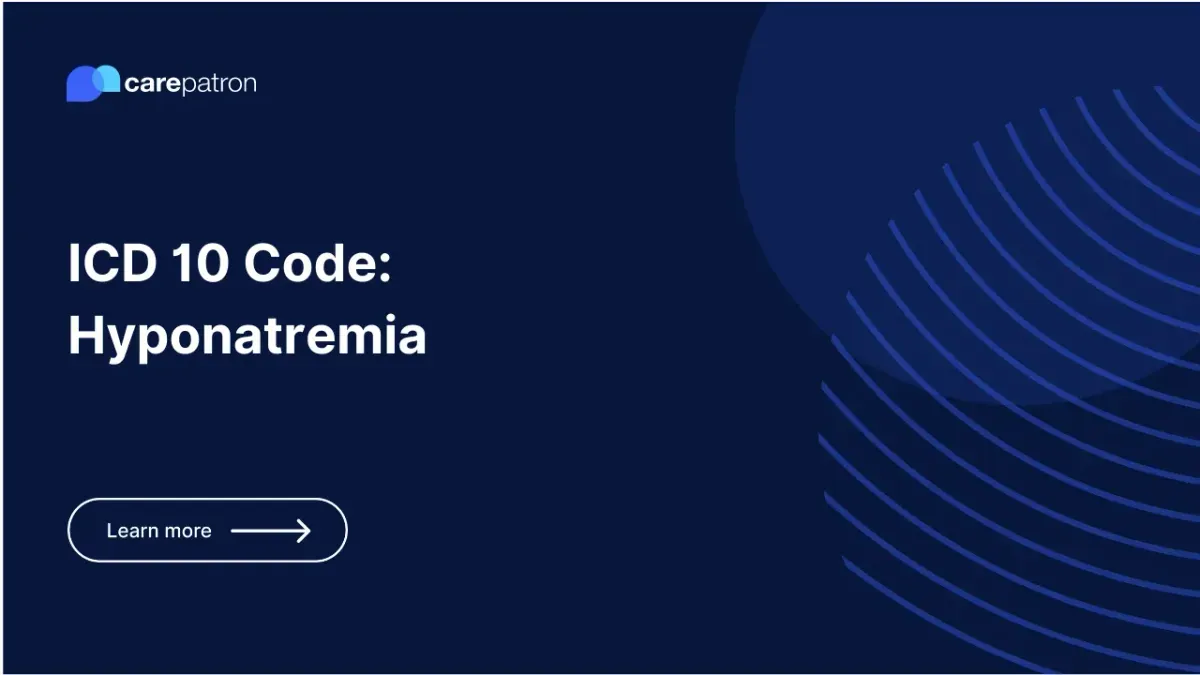
Hyponatremia ICD-10-CM Codes | 2023
Discover the commonly used ICD-10 codes for Hyponatremia, understand what each code signifies, and learn which are billable.
Use Code
Commonly asked questions
A Hyponatremia ICD code is used when a patient has been diagnosed with hyponatremia. These codes are utilized for billing and medical records to indicate a patient's specific condition.
Yes, Hyponatremia diagnoses are billable. E87.1 (Hypo-osmolality and hyponatremia), P74.22 (Neonatal hyponatremia), and others are billable codes. Always double-check with your specific healthcare provider or insurance to ensure coverage.
Treatment for hyponatremia varies based on its cause and severity. It may include adjusting medication doses, changing to different drugs, or addressing underlying medical conditions. In severe cases, treatment might consist of intravenous electrolyte solutions and medications to manage symptoms.
EHR and practice management software
Get started for free
*No credit card required
Free
$0/usd
Unlimited clients
Telehealth
1GB of storage
Client portal text
Automated billing and online payments
